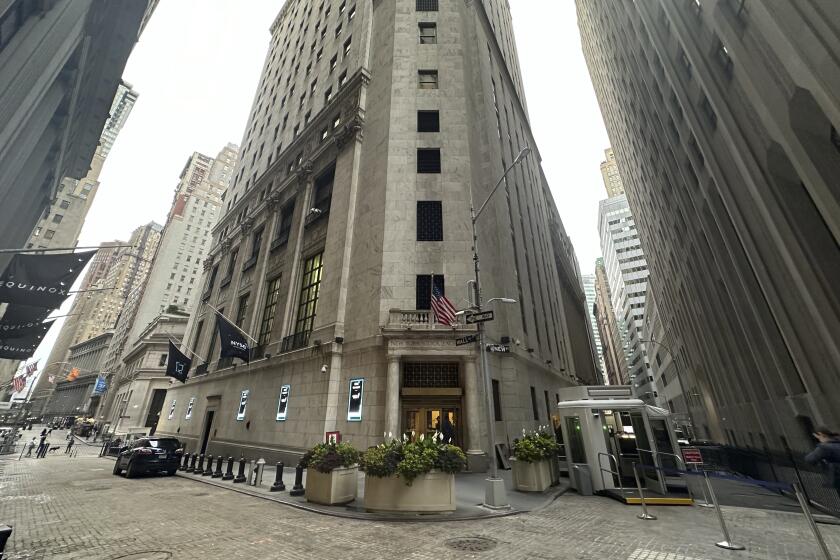The Irony About Point Arguello : The Project That Chevron Fought So Hard for May Not Make Any Money
Chevron Corp.’s Sandy Cornelius triumphantly held up the precious flask--a half-pint of crude oil produced at the much-troubled Point Arguello offshore project.
The flask, displayed at a press briefing here Monday, represented a victory of sorts. It contained the first commercial oil squeezed from the vast undersea reservoirs of the $2.5-billion project, despite continuing regulatory delays.
Until May 27, the day Chevron cranked up its three offshore platforms, the project had sat idle for more than three years while regulators and company officials squabbled over the best way to transport the oil to Los Angeles refineries.
But the small container of dark viscous liquid also represented a failure as well. The oil in the flask would bring less than 2 cents at the current market price of $7.50 a barrel, despite the enormous costs of producing it.
“Although it’s not worth anything, it’s pretty expensive,” acknowledged Cornelius, the Point Arguello project manager, during the briefing at Chevron’s Gaviota processing plant.
At today’s prices, Chevron and its 17 partners have acknowledged that they will never turn a profit from the project, even if they are allowed to boost production from the current 13,000 barrels a day to the maximum of 100,000.
“I don’t think this project will ever approach . . . paying for (itself),” said Chevron spokesman Michael Marcy.
And that economic fact--even more than the current federal moratorium on offshore drilling--means that Point Arguello and a second project down the coast likely will be the last oil projects off California’s shores for the foreseeable future, analysts say.
“I would really think that people would think twice about undertaking a major project in California,” said Peter Hunsberger, director of research at John S. Herold Inc., a petroleum research firm in Greenwich, Conn.
Oil first was discovered at Point Arguello in 1979. Though state and local regulators continue to fight plans by Chevron and its partners to ship oil from the project by tanker, the operators hope to be producing up to 20,000 barrels a day by August.
Still, these days there’s just no money in such an offshore project, even with a huge oil reserve estimated at between 300 million and 500 million barrels--what Marcy called the largest discovery in the Western United States since the opening of Prudhoe Bay in Alaska.
“When this project was first contemplated in the late 1970s, crude oil was already . . . selling at around $32 a barrel,” he said. “And it seemed entirely plausible to predicate this project and its profitability on around $40-a-barrel (oil).”
But project economists failed to foresee the collapse of oil prices in the mid-1980s.
Now, even after the Persian Gulf crisis, oil prices are expected to remain relatively low through the decade. The closing price in Monday trading for the best-quality U.S. crude was $19.94 a barrel. Prices are much lower for thick, high-sulfur-grade Point Arguello crude, which few refineries can swallow.
As a result, Chevron and its major partners have already written off much of their investments in the project.
“I’m estimating you’d need something on the order of ($35 to $40)-a-barrel-plus to make this an economic, viable venture,” said Donald A. Yunker, district manager for Chevron’s production department in Ventura.
For others, Point Arguello stands as a cold lesson in the uncertainties of offshore projects.
“It’s one of the highest-risk businesses there is,” said Robert Stewart, president of National Ocean Industries Assn., a trade group representing offshore developers. Point Arguello “is a very discouraging episode in the history of this industry, and it will color the decisions of other companies.”
Regulatory delays only compound the economic problems.
At Point Arguello, three platforms, an onshore processing plant, a marine terminal, massive storage tanks and 27 miles of pipeline linking things together have sat in mothballs since their completion in 1987.
Fears of a spill like the one that fouled Santa Barbara beaches in 1969 have made local officials and residents especially wary of oil projects.
“It’s highly unlikely that any other American oil company, at least, would be eager to follow up on that process,” Marcy said.
The question remains moot as long as President Bush’s moratorium on most lease sales off California’s coast remains in place through the end of the century.
In 1996, when 87 leases off the coast near here are put up for bid, it’s questionable how many oil companies will bid, Chevron officials said.
Chevron probably won’t be one of them, they added.
“All but one of those leases have been offered before, and the industry didn’t bid on them,” Marcy explained.
The only other major project waiting to come into operation is Exxon Corp.’s Santa Ynez project, which is expected to come on-stream in the mid-1990s.
Of course, there remain other U.S. offshore options for oil companies, particularly in the Gulf of Mexico and off Alaska, where huge reserves may justify the heavy investment.
But the real activity will take place off more distant shores.
“It takes an awful lot of money to develop something like this,” said Marcy. “What we’re going to do is take that money where, if we do invest it, we actually can go ahead and develop that resource. And what that means, unfortunately . . . is going overseas.”
Chevron already is considering projects in the Soviet Union, Angola, Papua New Guinea, Nigeria, Indonesia and off China.
More to Read
Inside the business of entertainment
The Wide Shot brings you news, analysis and insights on everything from streaming wars to production — and what it all means for the future.
You may occasionally receive promotional content from the Los Angeles Times.










